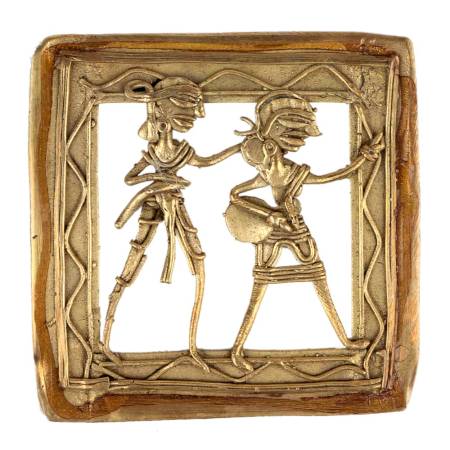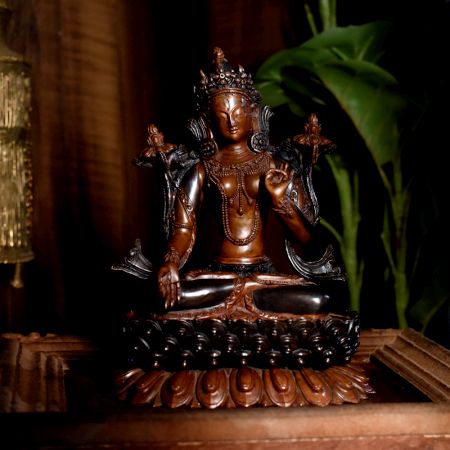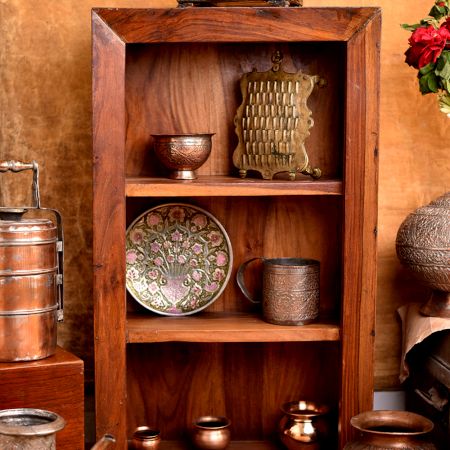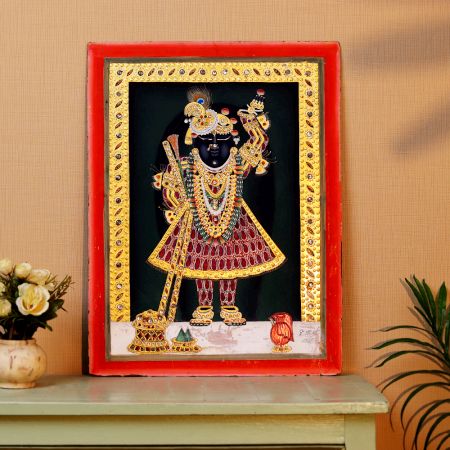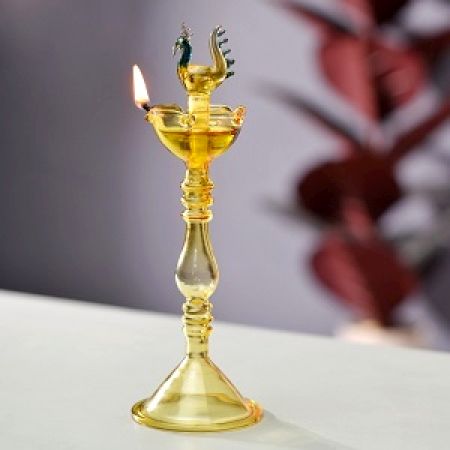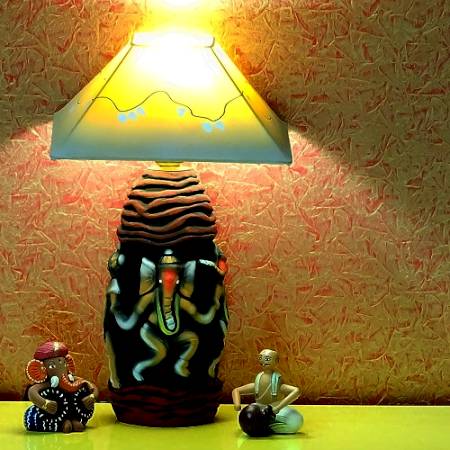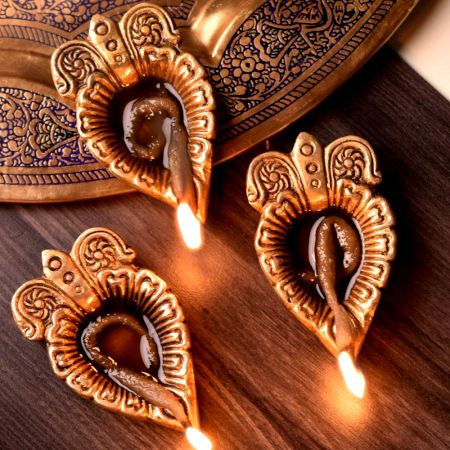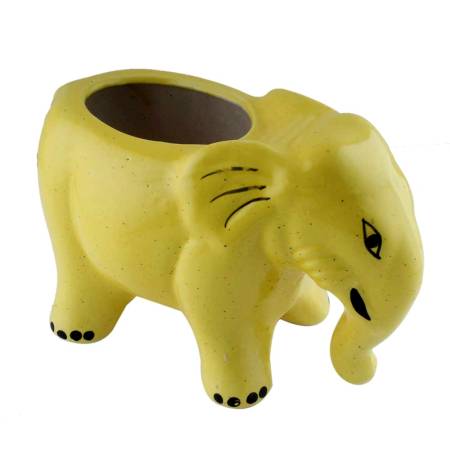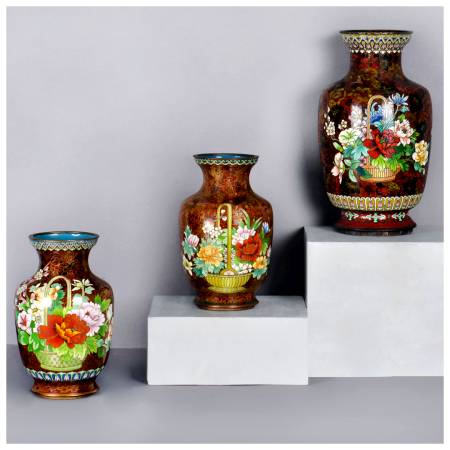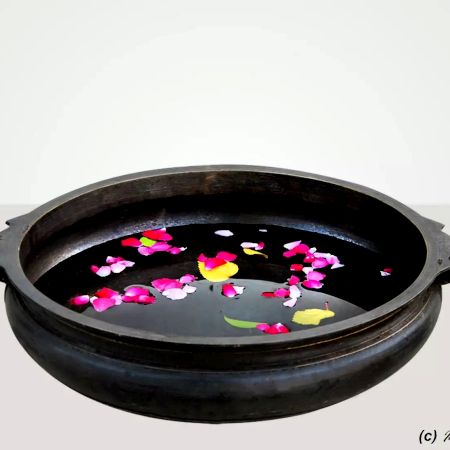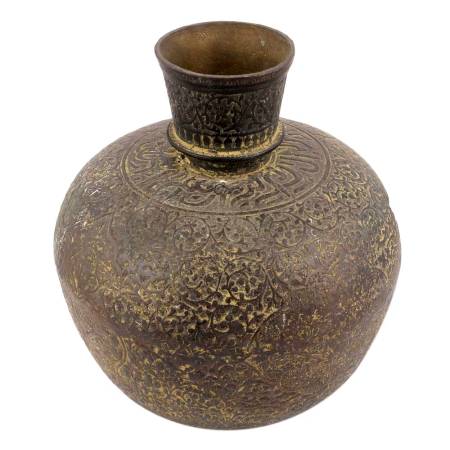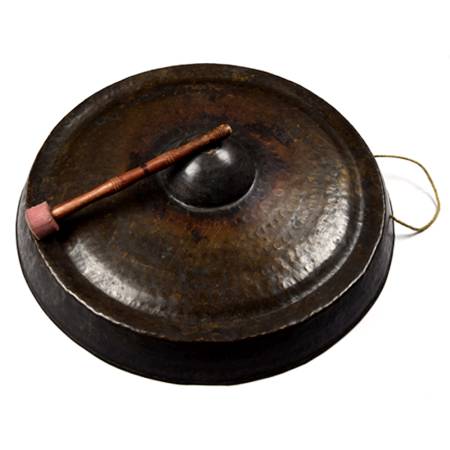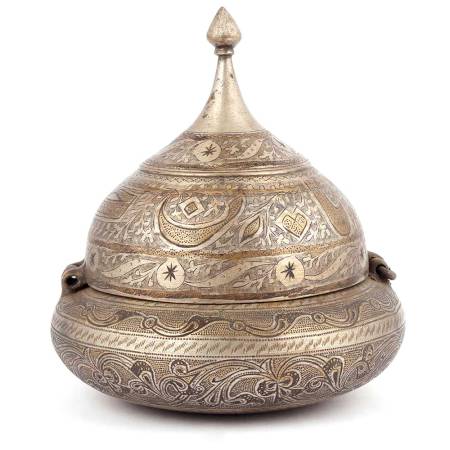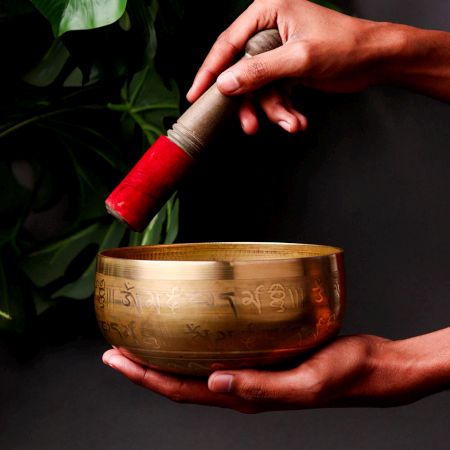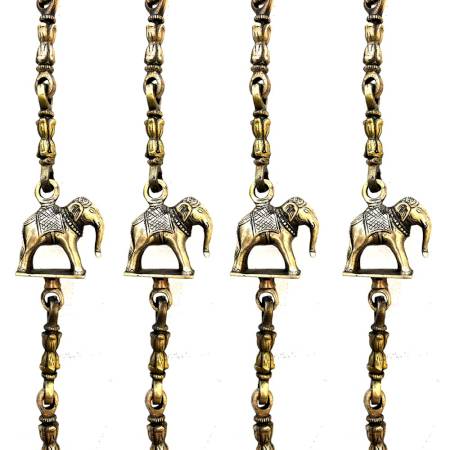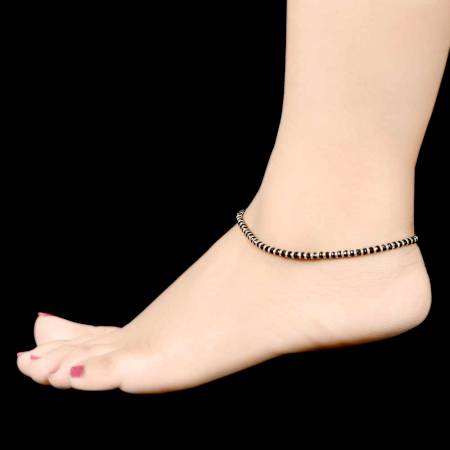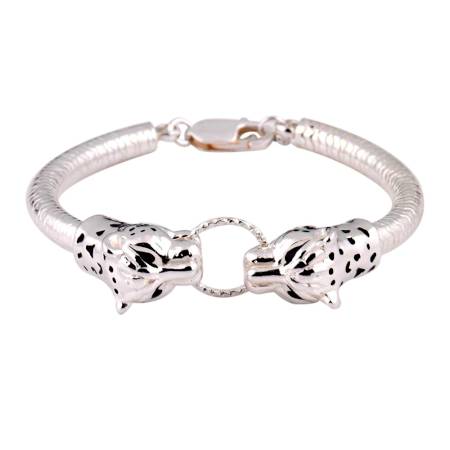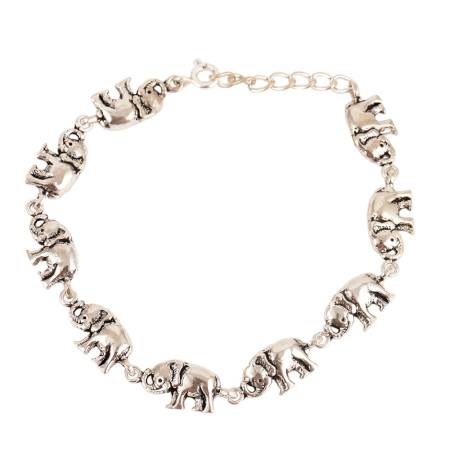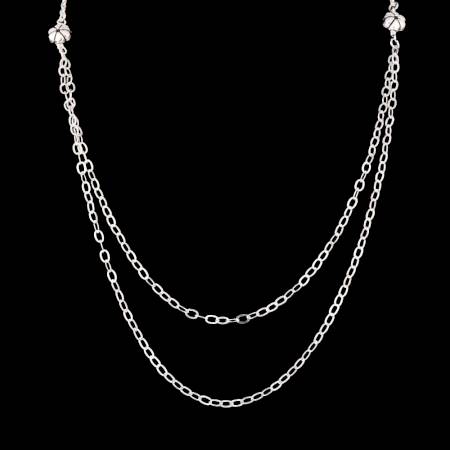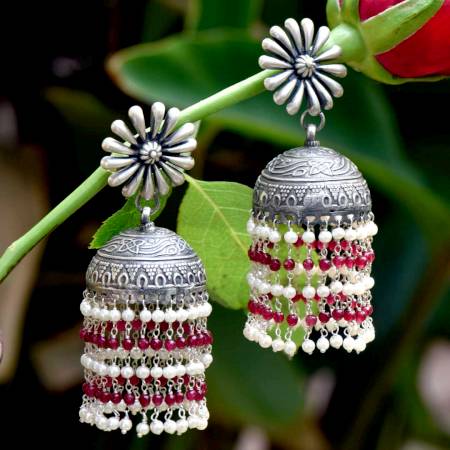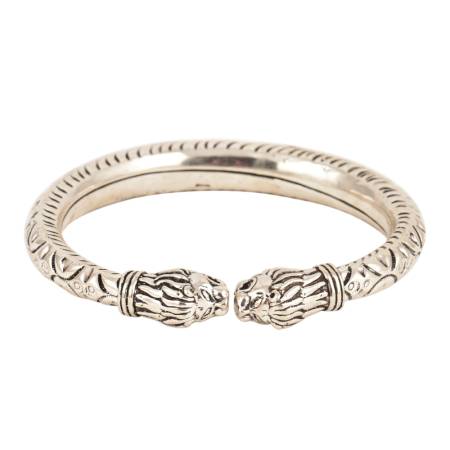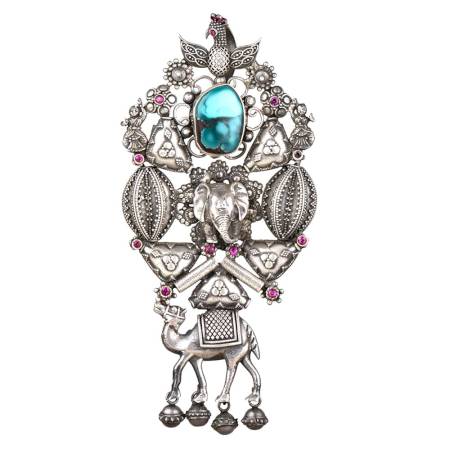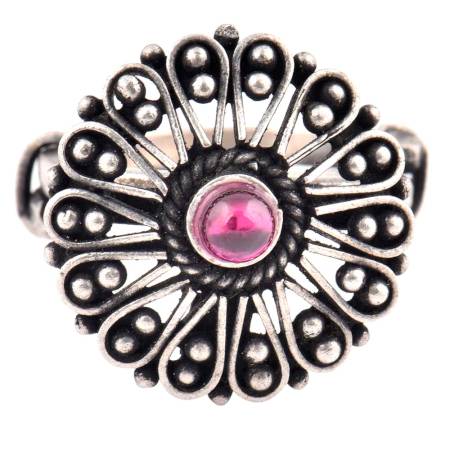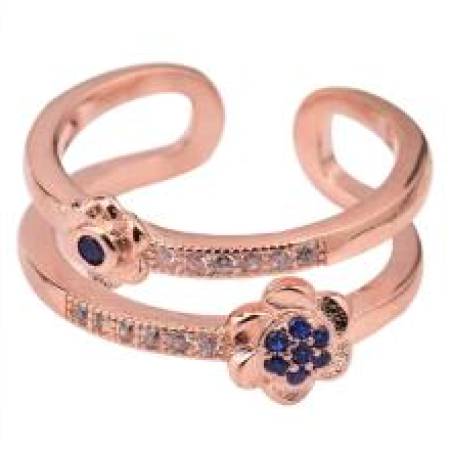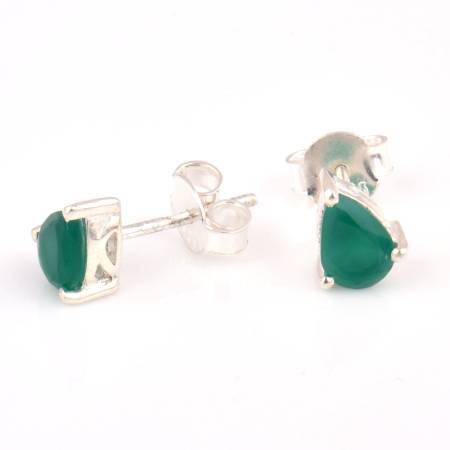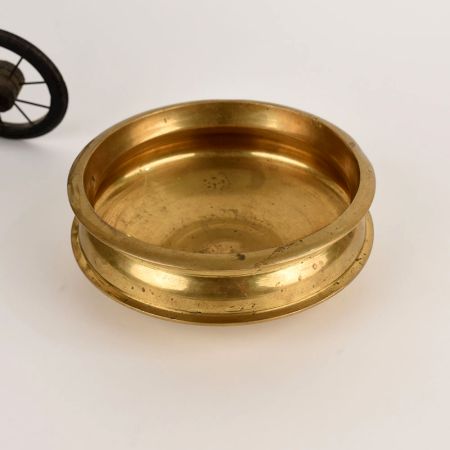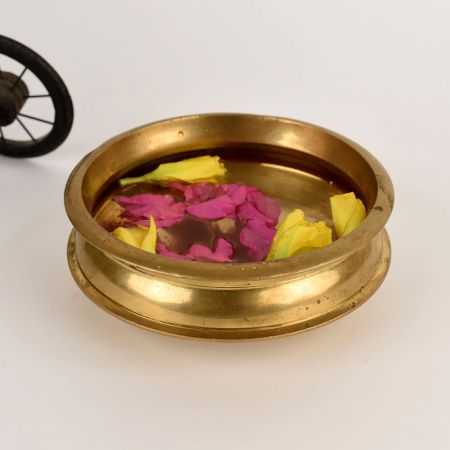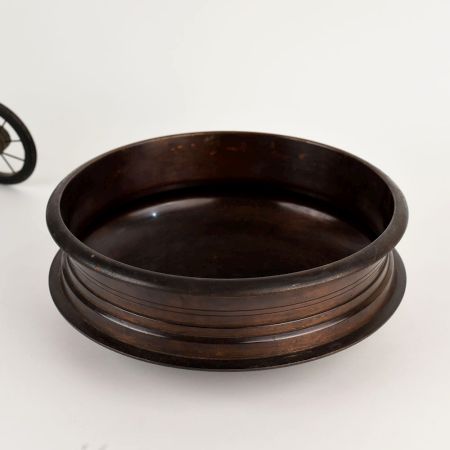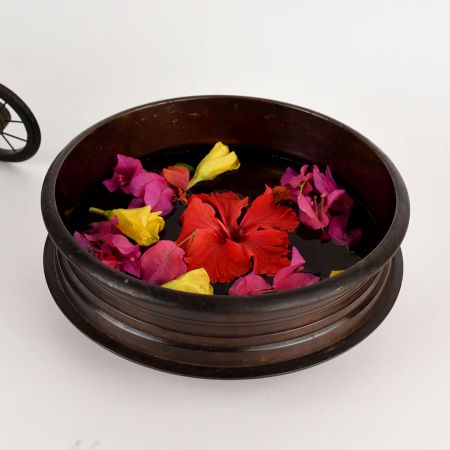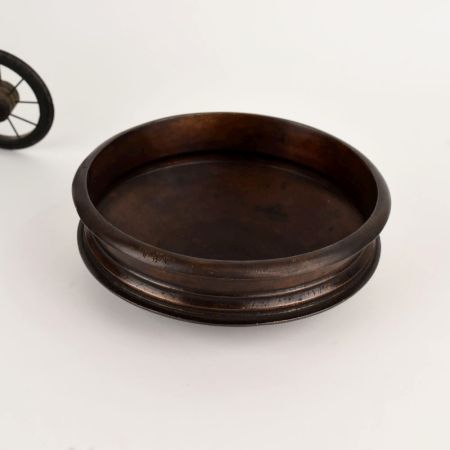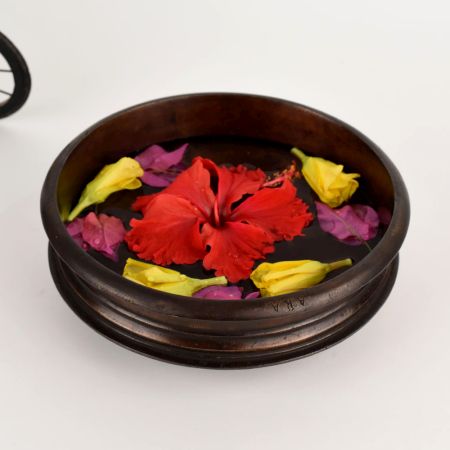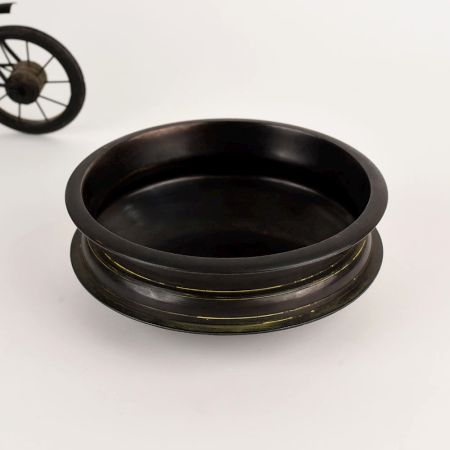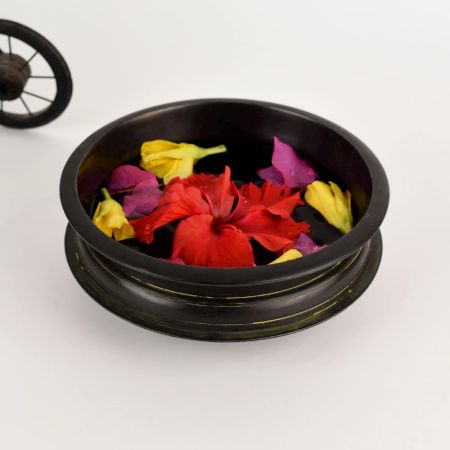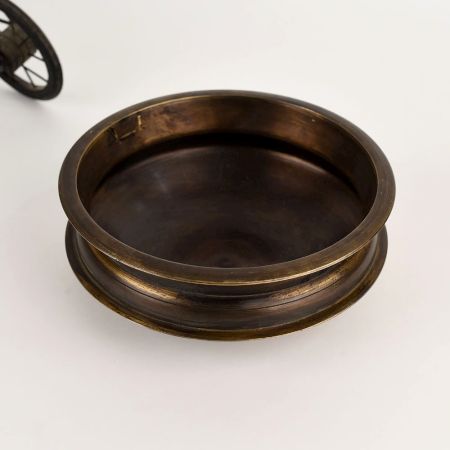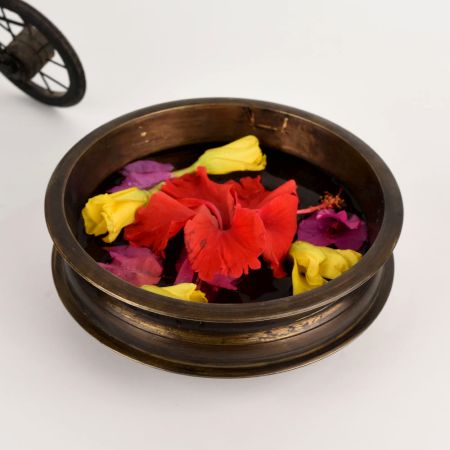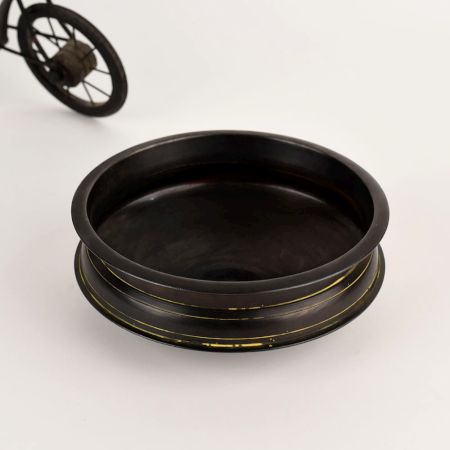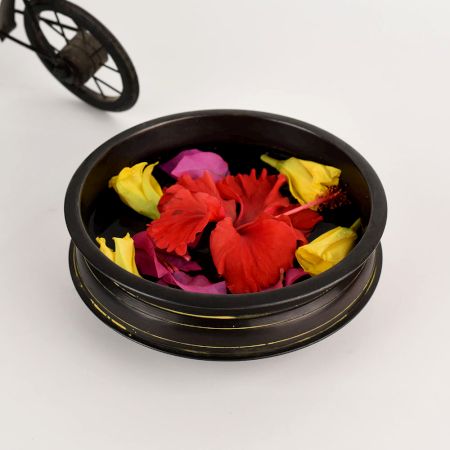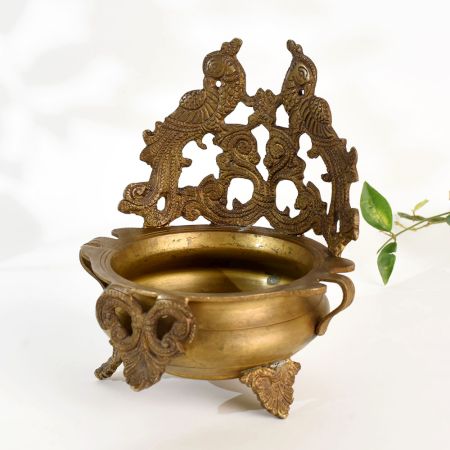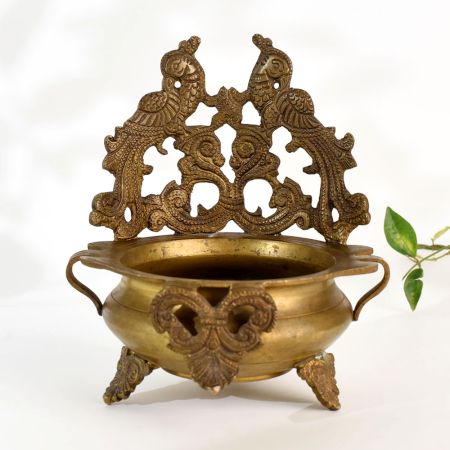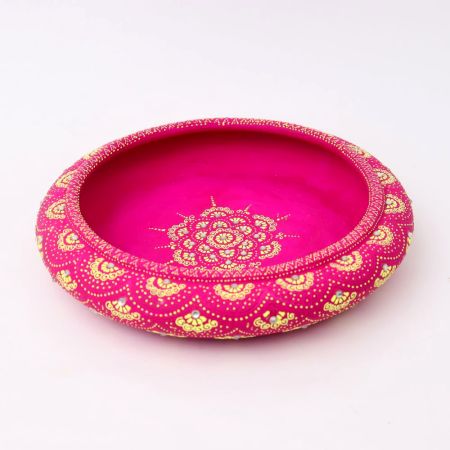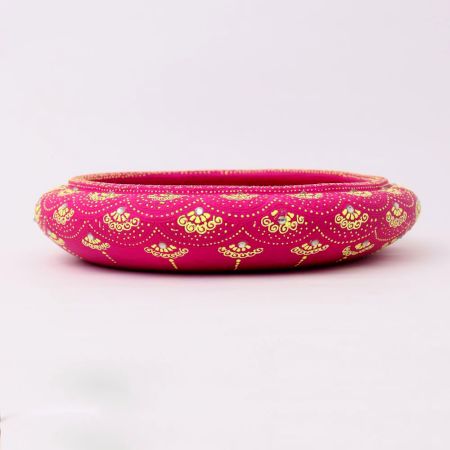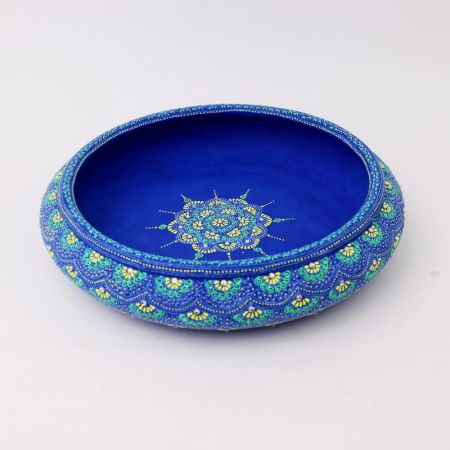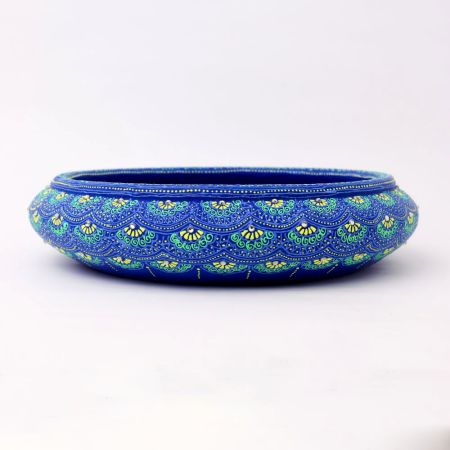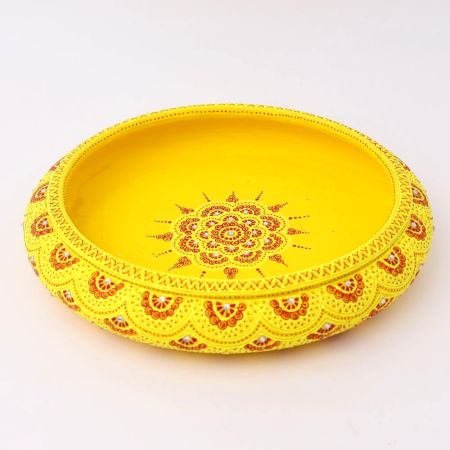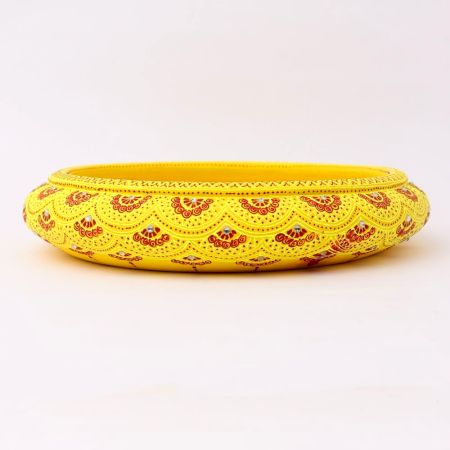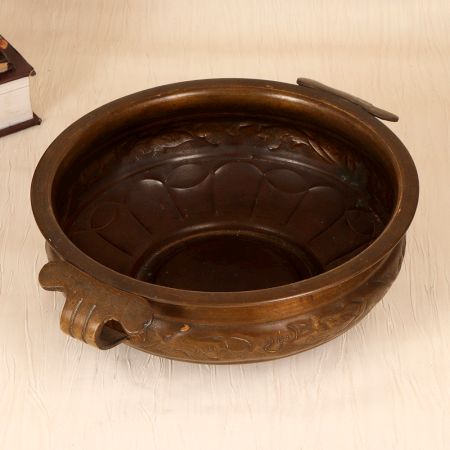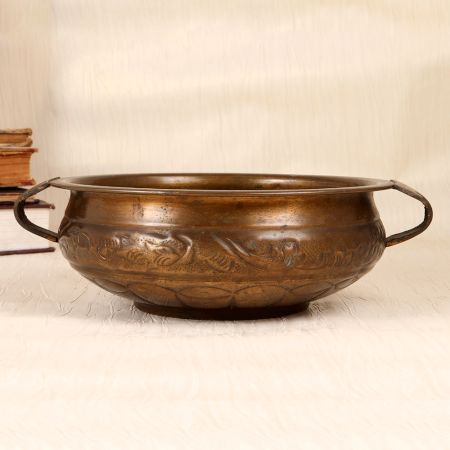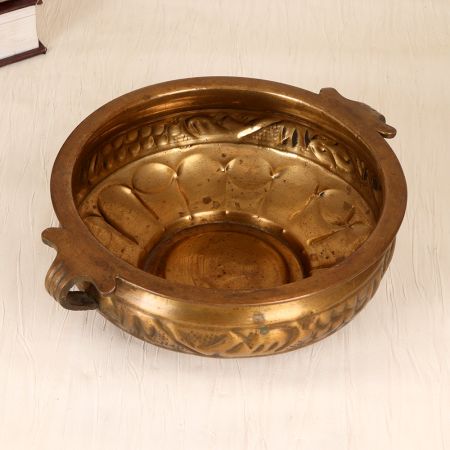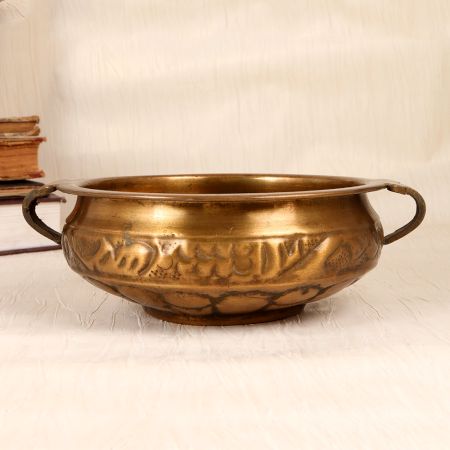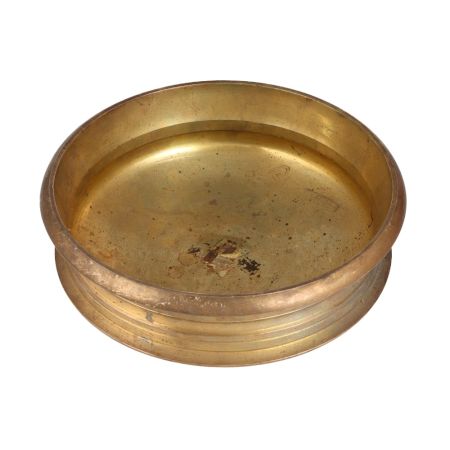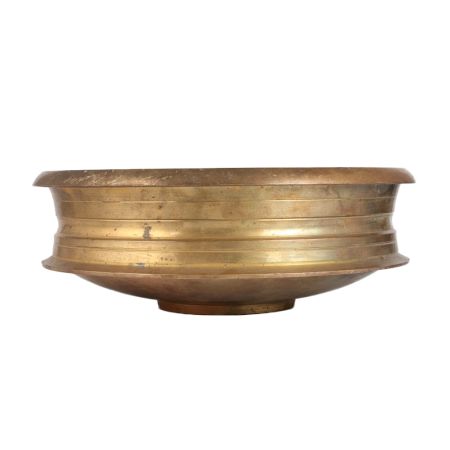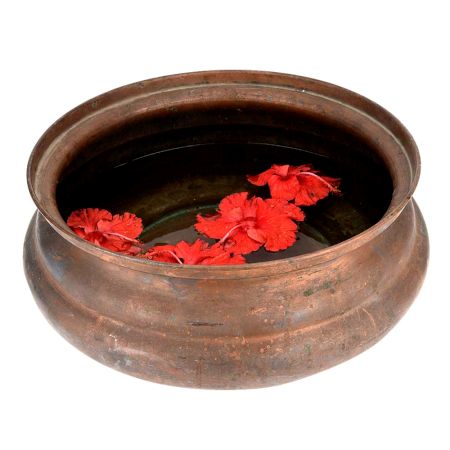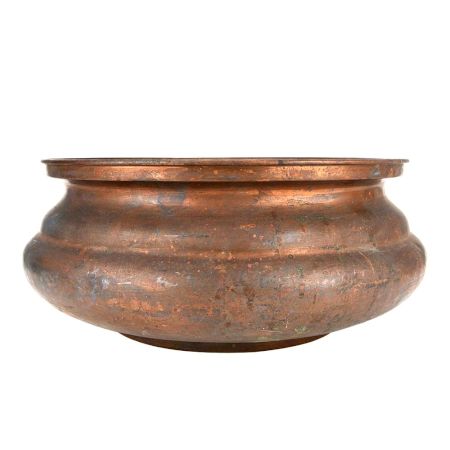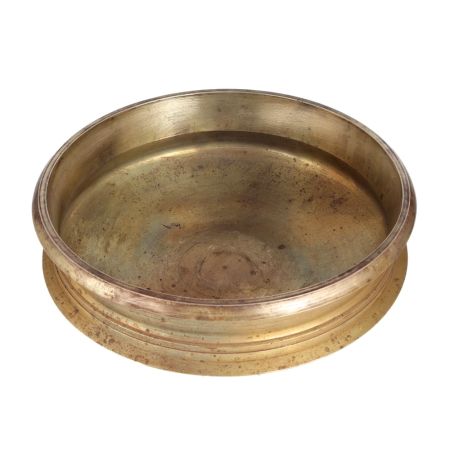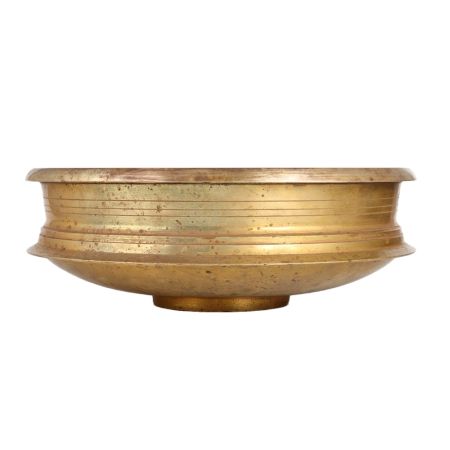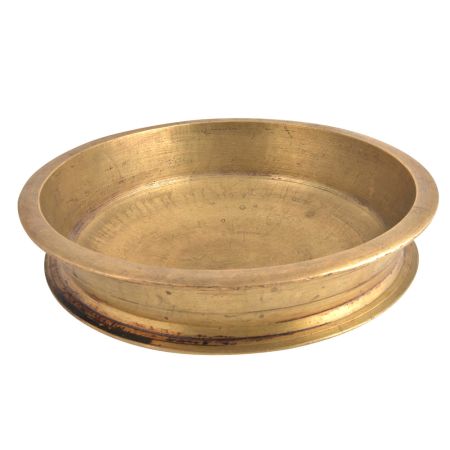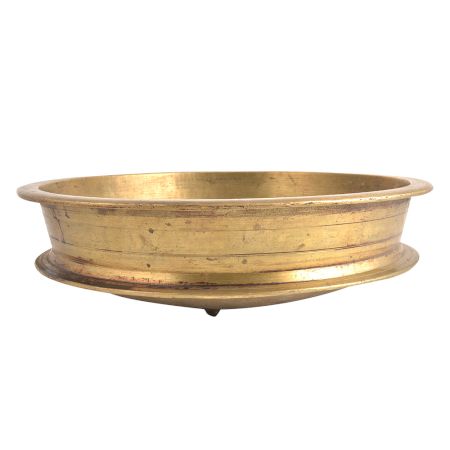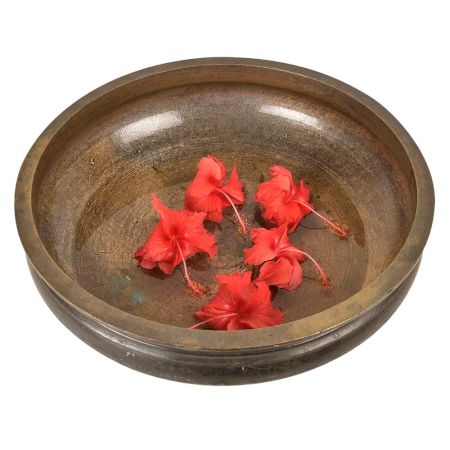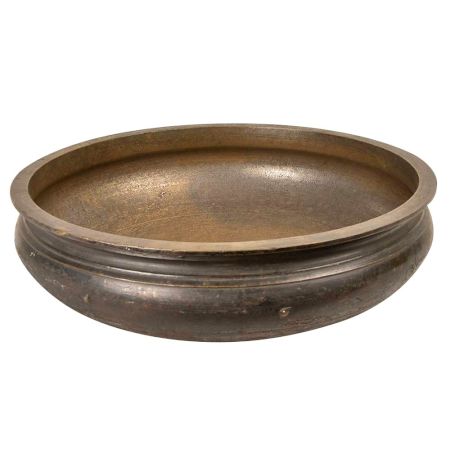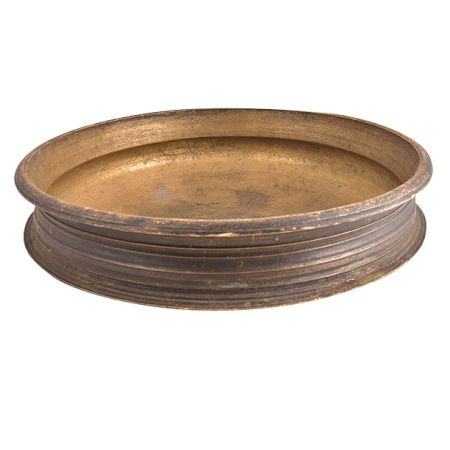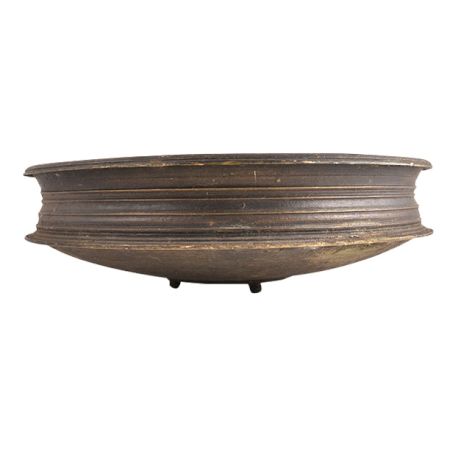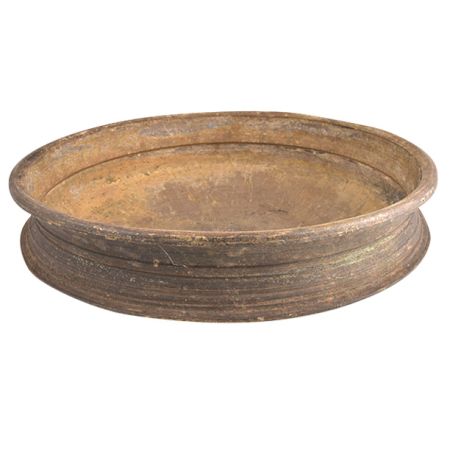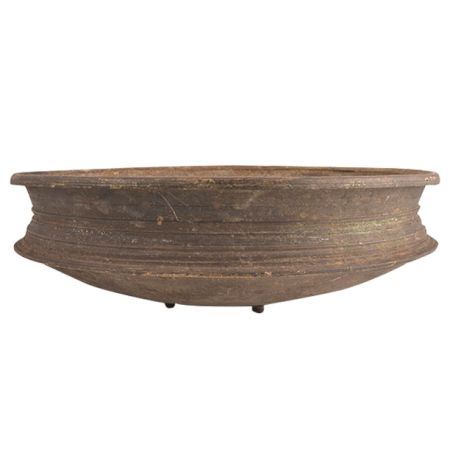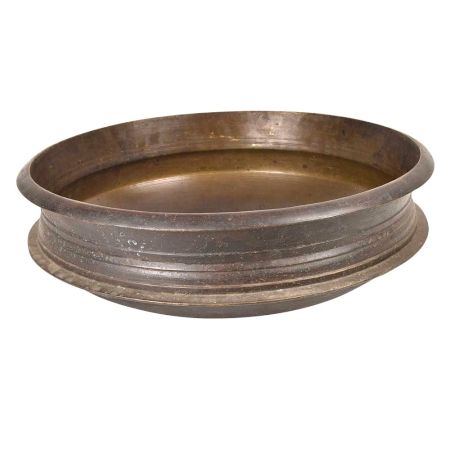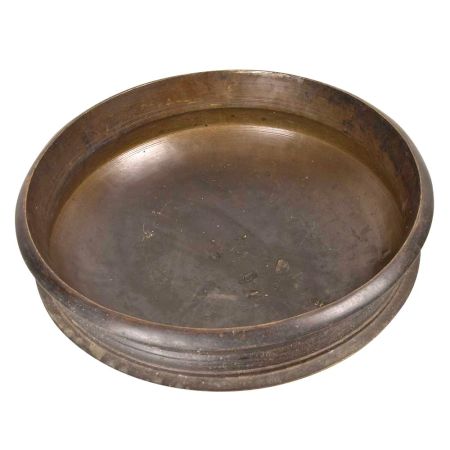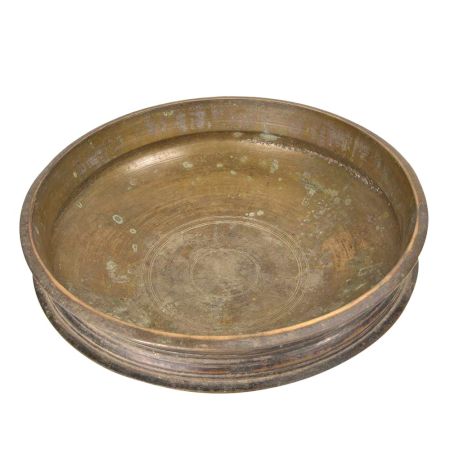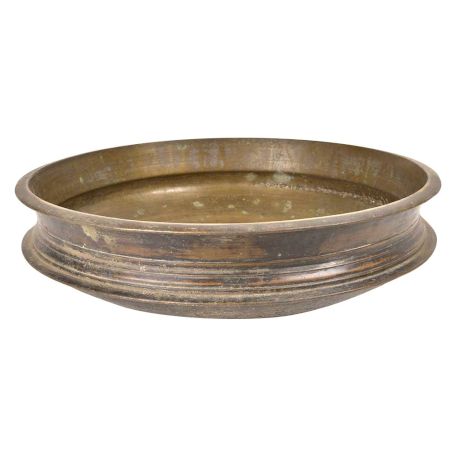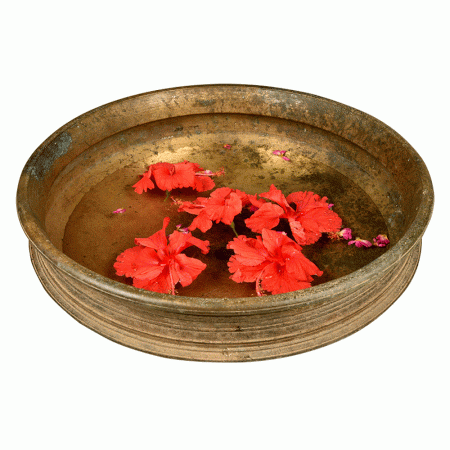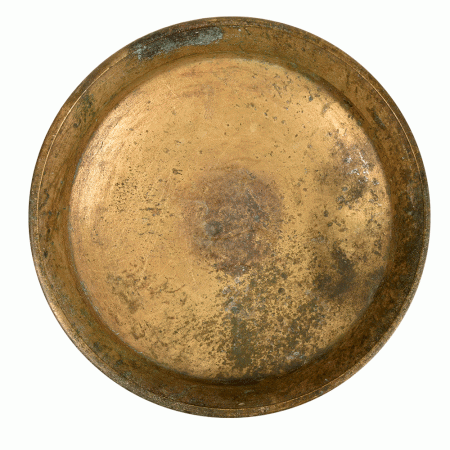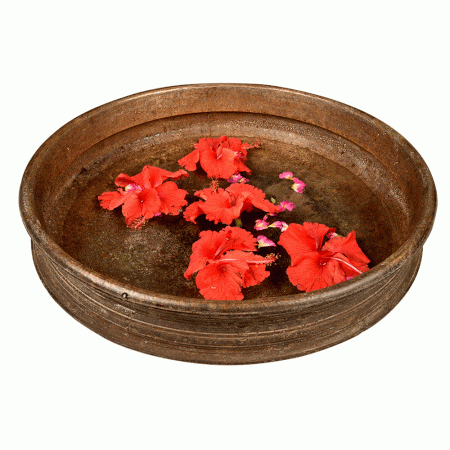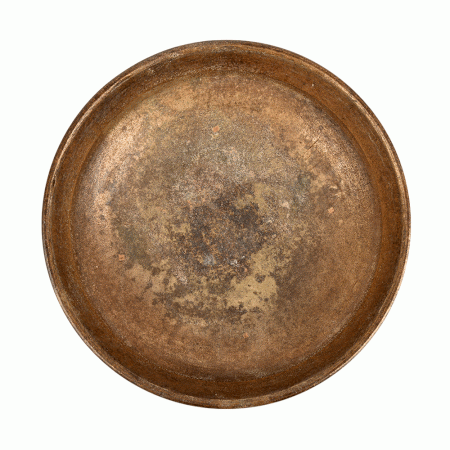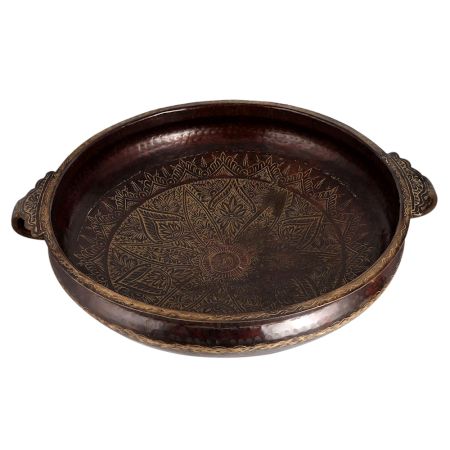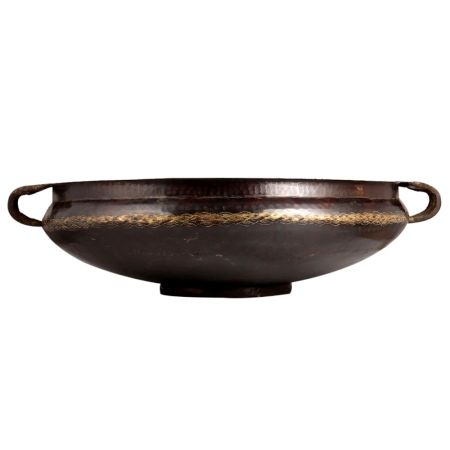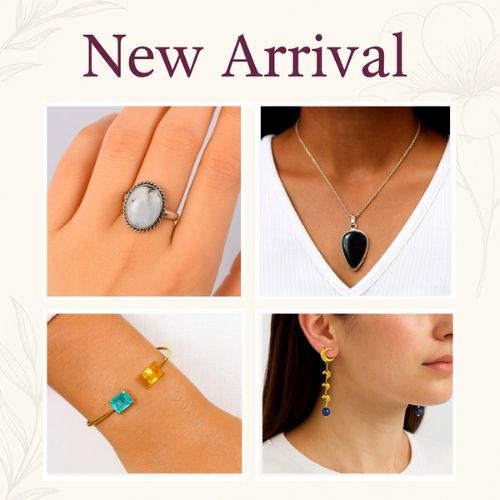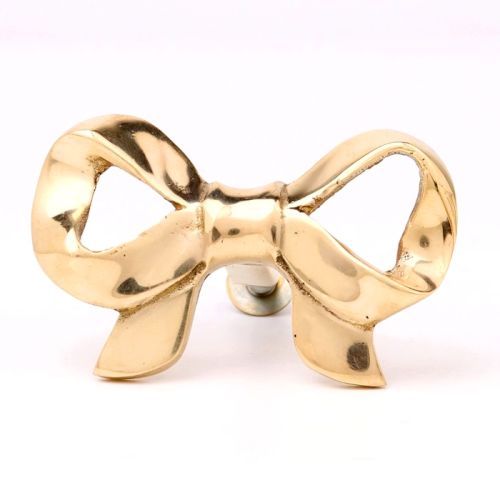Urli – An Object of Utility, Ritual, and Aesthetic
An urli is not merely a vessel; it is an emblem of tradition, artistry, and timeless Indian craftsmanship. Originating in South India, particularly Kerala, urlis were once central to kitchens, temples, and community rituals. Crafted from bronze or brass, they carried weight beyond function, serving food, offering water, or symbolizing prosperity during festivals. Today, their transition into home decor is seamless. Placed at entrances, courtyards, or living spaces, they invite balance and serenity. For readers, the urli serves as both guide and gateway: a product of heritage that still finds space in contemporary design and storytelling.
What Is An Urli?
An urli is a wide-mouthed, circular vessel traditionally made of brass or bronze, deeply rooted in South Indian heritage. Historically, households used urlis for cooking, boiling herbs, or preparing ayurvedic remedies. Temples employed them in rituals, often filling them with water, flowers, or sacred offerings. Beyond function, the urli symbolized abundance and hospitality, making it a familiar sight during festivals or community gatherings. Over time, it transformed into a decorative centerpiece, placed at home entrances or courtyards, often filled with water and floating diyas or petals. This dual journey, utility to symbolism, makes the urli unique. It is not frozen in the past but continues to evolve as a living cultural object. Readers searching for clarity will see it not as just a vessel but as a marker of continuity, bridging everyday utility with deeper cultural resonance.
What Emotions Or Symbolism Does An Urli Commonly Represent?
The urli embodies emotions tied to warmth, prosperity, and welcome. Traditionally, its presence at the threshold of a home signified abundance and good fortune. Filled with water and flowers, it represents purity and renewal, while floating diyas transform it into a beacon of light and hope. In rituals, the urli stands for balance, earth (metal), water (contents), air (fragrance of flowers), and fire (diyas), anchoring the four natural elements into one harmonious space.
Symbolic layers often include:
- Hospitality: Guests are greeted with the gentle calm of floating flowers.
- Spirituality: A vessel that ties everyday life with divine rituals.
- Continuity: A reminder that traditions can remain alive in contemporary decor.
For the reader, the urli’s symbolism is both universal and personal. It becomes a vessel of emotions that outlasts utility, linking family gatherings, rituals, and modern styling with an undercurrent of cultural meaning.
What Are The Most Recognized Materials And Designs Used In Urlis (e.g., Brass, Bronze, Stone)?
Urlis are most recognized in brass and bronze, metals chosen for durability, shine, and ritual purity. Bronze urlis, often heavier, were historically reserved for temples or larger kitchens, while brass urlis found a natural place in homes. Stone urlis, carved from granite or soapstone, embodied regional craftsmanship, often seen in courtyards and gardens. In terms of design, traditional urlis remain circular with wide rims, but variations include intricate floral engravings, sculpted animal motifs (peacocks, elephants), or embossed geometric patterns. Contemporary adaptations introduce copper, steel, or ceramic, blending old aesthetics with modern tastes. Each design tells a story: engraved motifs recall mythological tales, while smooth minimalist forms serve modern decor. Readers searching for details should know that material choice affects not just look but also longevity, brass urlis need regular polishing, stone urlis weather naturally outdoors, and bronze maintains its patina gracefully, deepening its antique charm.
Why Are Urlis Still Revered In Contemporary Homes And Cultural Spaces?
The enduring relevance of urlis lies in their versatility and cultural resonance. In homes, they shift seamlessly between tradition and design, appearing at entrances filled with flowers, anchoring living rooms with water reflections, or setting a festive mood with diyas. In cultural spaces, urlis retain ritual value, grounding ceremonies in heritage. Their appeal today is also aesthetic, urlis embody handcrafted artistry, natural symmetry, and timeless charm, aligning with sustainable living and artisanal revival.
Why they endure:
- They embody India’s living tradition, connecting homes to heritage.
- They adapt to modern interiors without losing authenticity.
- They evoke calmness, making them perfect for meditative or festive spaces.
For the reader, the takeaway is clear, urlis thrive because they are not relics. They are living objects, continually reshaped by history, design, and emotion, bridging past and present in one enduring form.
Crafting, Materials & Techniques of Urli
The making of an urli reflects the depth of Indian artisanal heritage. Traditionally, skilled metalworkers used lost-wax casting or hand-hammering techniques to shape bronze and brass into balanced, wide-rimmed vessels. These craftsmen were not just creating utility items but preserving ritualistic traditions and cultural aesthetics. The process often passed down through generations, blending metallurgy with artistry. Each urli was designed to last centuries, weathering use in kitchens, temples, and open courtyards. Today, while some urlis are machine-made, the handcrafted ones continue to carry the legacy of patience, precision, and devotion that defined their original creation.
How Were Traditional Urlis Originally Crafted?
Traditional urlis were born out of painstaking craftsmanship rather than quick manufacturing. Artisans relied on ancient metal casting techniques such as lost-wax or sand casting. The alloy, often bronze or brass, was melted at high temperatures and poured into molds carefully prepared for proportion and strength. Once cooled, the vessel was hand-polished and engraved with motifs reflecting flora, fauna, or spiritual patterns. In South India, families of smiths devoted entire lifetimes to mastering this process, ensuring each urli balanced utility with beauty.
The urli’s strength came from both metal choice and its circular geometry, which distributed heat evenly when used for cooking or boiling herbs. Beyond function, engravings added cultural depth, making every piece distinct. Even in modern times, handmade urlis are valued because they carry the thumbprints of tradition. For readers, the takeaway is clear, authentic urlis embody not only artistry but also centuries of perfected techniques.
What Metals Or Materials Were Commonly Used In Different Eras (e.g., Brass, Bronze, Clay)?
Materials for crafting urlis shifted with region and purpose. The most common were brass and bronze, alloys chosen for durability, shine, and ritual purity. Bronze, rich in copper and tin, was often associated with temples or larger households, symbolizing strength and permanence. Brass, lighter in tone and easier to polish, suited domestic spaces, giving urlis a welcoming glow. In rural contexts, clay and terracotta urlis served simpler needs, especially in kitchens. Stone urlis carved from granite were prominent in courtyards and gardens, valued for their ability to endure weather.
Era-based material use:
- Ancient temples: bronze urlis for rituals.
- Domestic kitchens: brass urlis for daily cooking.
- Rural households: clay urlis for affordability.
- Outdoor courtyards: granite or soapstone urlis for resilience.
For the reader, knowing material history helps identify authenticity. Each metal or stone used in urlis carries with it specific meanings, uses, and maintenance needs.
What Role Do Shape, Engravings, And Size Play In The Aesthetic Of An Urli?
The aesthetic power of an urli lies in its proportions and detailing. The wide circular shape is not arbitrary; it creates balance, symmetry, and openness, inviting both function and symbolism. Engravings elevate this simplicity, with patterns of lotus, peacocks, or mythological figures reflecting cultural identity. In larger urlis, engravings often covered the rim or base, while smaller ones stayed plain for everyday use.
Role in aesthetics:
- Shape: A circular form that reflects harmony and unity.
- Engravings: Storytelling through motifs, blending artistry with symbolism.
- Size: Large urlis dominate temple halls or courtyards, smaller ones bring subtlety indoors.
For the modern reader, these elements guide purchase decisions. A large, engraved urli becomes a centerpiece for cultural decor, while a smaller, polished one brings minimal elegance. Ultimately, shape and detailing are not just visuals but carriers of heritage and meaning.
Symbolism, Rituals & Storytelling of Urli
The Urli is more than a vessel. It is a silent storyteller. Rooted in South Indian households, especially Kerala, it reflects continuity of tradition. Water symbolizes purity, while floating flowers and diyas carry the essence of hope, harmony, and auspicious beginnings. In rituals, it anchors the senses: the fragrance of petals, the gentle flicker of lamps, the stillness of water. Together, these form a meditative landscape. Beyond its ritual use, the Urli carries symbolic depth, inviting calm energy into homes, welcoming prosperity, and creating a space where aesthetics and spirituality converge.
What Cultural Or Spiritual Significance Does The Urli Carry?
The Urli embodies a union of elements: earth in metal, water in its still surface, fire in the diya, and air through fragrance. In Hindu households, placing an Urli near the entrance is symbolic of inviting Lakshmi, the goddess of wealth. Its presence at rituals signifies cleansing of negative energies and grounding of intentions. In Kerala weddings, Urlis filled with jasmine and rose petals are not mere decor, they signal prosperity and fertility. Temples often place Urlis as focal points, merging beauty with devotion. Across centuries, it has also crossed into secular spaces, adopted as a sign of welcome and aesthetic refinement. This layered role, spiritual yet functional, traditional yet adaptive, makes the Urli a cultural marker. At its heart, the Urli is not just metalwork, but a vessel carrying centuries of faith, abundance, and storytelling.
How Has The Urli Been Used In Religious Or Festive Traditions?
Urlis appear at thresholds during Diwali, Onam, and Navratri, where petals and oil lamps illuminate doorways. In South Indian temples, Urlis filled with holy water are used in abhishekam rituals. Weddings integrate them as symbols of fertility and blessings, often surrounded by turmeric, rice, and betel leaves. During Onam, Urlis complement pookalam (flower rangoli), carrying forward the narrative of welcome and abundance.
Key patterns in use:
- Festivals: Diwali, Pongal, and Onam employ Urlis for light and fragrance.
- Weddings: Positioned as fertility symbols in ceremonial halls.
- Temples: Used for rituals, enhancing sacred ambience.
Each context amplifies its role as both a practical vessel and symbolic container of hope. Through generations, these uses blend devotion with artistry, keeping the Urli central to India’s cultural rhythm.
How Do Water, Flowers, And Floating Diyas Influence The Mood Of An Urli Arrangement?
An Urli comes alive only when layered with natural elements. Water creates reflection, symbolizing clarity and balance. Flowers add fragrance and color, transforming the vessel into a living artwork. Floating diyas bring warmth, movement, and divine resonance. Together, they affect sensory perception, soft light lowers anxiety, fragrance invokes memory, and still water grounds emotion. Imagine entering a home during Diwali: an Urli glowing with marigold petals and flickering diyas becomes both decor and prayer. This sensory layering elevates a space from ordinary to sacred. Ultimately, the Urli arrangement transforms mood, inviting peace, celebration, and connection.
Purchase, Collection & Investment of Urli
Urlis bridge tradition and modern lifestyle. You can find them in temple towns, heritage markets, or curated online platforms. Antique Urlis carry generational stories, while new handcrafted pieces showcase artisanal skill. Collecting Urlis is not just about owning an object, but preserving a lineage. Some families pass them as heirlooms, valuing their patina and ritual history. For contemporary collectors, the Urli is both an aesthetic investment and a cultural statement. The balance lies in knowing authenticity, appreciating craft, and recognizing long-term cultural value, whether for heritage preservation, gifting, or as a timeless decor anchor.
Where Can You Buy Authentic Or Decorative Urlis?
Authentic Urlis are found in temple towns of Kerala, Tamil Nadu, and Karnataka, where artisans still practice ancient casting methods. Antique Urlis can be sourced from heritage shops or certified dealers, but require careful verification. Modern households often explore curated online stores, handicraft fairs, and government-run emporiums. For decorative purposes, Urlis in brass, bronze, or even terracotta are available through lifestyle brands and artisanal platforms.
- Offline: Temple town workshops, antique stores, handicraft exhibitions.
- Online: Authentic craft websites, trusted e-commerce platforms, cultural boutiques.
Whether for ritual or decor, purchase depends on intent: antique for legacy, handcrafted for artistry, or modern reproductions for accessible style. Each choice carries cultural weight, blending heritage with today’s lifestyle needs.
How Can You Verify The Authenticity Of A Handcrafted Urli?
Authenticity lies in craftsmanship. Traditional Urlis are heavy, as they use solid brass or bronze, unlike lightweight modern imitations. Check for hand-hammered textures, casting marks, and slight irregularities, signs of handmade work. Patina is another marker, older pieces develop a natural sheen, not an artificial gloss. Ask for provenance if purchasing antiques, dealers should provide origin details. Craft clusters in Kerala and Tamil Nadu are reliable sources, as artisans pass techniques through generations. Testing with a magnet helps too, genuine brass or bronze does not attract. Ultimately, authenticity requires both eye and trust, valuing artisan legacy over factory precision.
What Makes An Urli A Valuable Heirloom Or Investment Piece?
The Urli becomes heirloom when its story intertwines with family history. A piece used in weddings, festivals, or temple donations carries emotional memory. From an investment view, antique Urlis grow in value due to scarcity and craftsmanship. Patina, detailing, and provenance increase worth. Collectors cherish Urlis as cultural capital, not just functional items. Families often preserve them across generations, believing they carry blessings and prosperity. Beyond financial value, an Urli anchors continuity, it represents lineage, artistry, and ritual. As lifestyles change, its significance grows, making it a dual investment: cultural and economic. A timeless reminder that some objects outlive trends.
Care, Maintenance & Preservation of Urli
Preserving an Urli is preserving history. Brass and bronze require care, cleaning, polishing, and mindful display. The charm lies in balance, retain patina for authenticity, but prevent corrosion. Placement is crucial, stands, wooden bases, or marble surrounds enhance both stability and style. With proper care, Urlis last generations, making them sustainable heirlooms. Restoration allows revival of old pieces, yet tradition respects natural aging. The key is thoughtful maintenance, keeping the vessel both functional and symbolic. Every act of cleaning or display is part of its ongoing story, blending heritage with living practice.
How Do You Properly Clean And Maintain A Brass Or Bronze Urli?
Cleaning Urlis requires gentle balance, removing stains without stripping patina. Traditional methods use tamarind pulp or lemon-salt paste, which naturally restore shine. Avoid harsh chemicals that erode metal surface. For daily maintenance, rinse and wipe with a soft cloth after use, preventing watermarks or residue from flowers and oils. Polishing with natural brass cleaners once in a while maintains glow without overdoing shine. Storing in dry areas reduces tarnish risk. Ultimately, the goal is longevity, an Urli should age gracefully, carrying the warmth of ritual use while remaining intact for generations.
What Stands Or Surroundings Best Complement An Urli Display?
The Urli shines when thoughtfully placed. Wooden carved stands, marble pedestals, or low rangoli bases frame it beautifully. In modern homes, Urlis work well at entrances, courtyards, or living room corners. Surroundings matter, pairing with brass lamps, rangoli, or indoor plants enhances visual harmony. Soft lighting, especially during evenings, magnifies its reflective quality. Outdoor gardens can use stone or terracotta bases, blending with natural greenery. Choosing the right stand is not just about stability, it frames the vessel’s presence. The right surrounding allows the Urli to act as both art and ritual anchor, uniting function with atmosphere.
Can Old Urlis Be Restored Without Losing Their Traditional Patina?
Yes, but with caution. Patina is the soul of an antique Urli, reflecting years of use and devotion. Over-cleaning erases this history. Restoration should focus on stabilizing metal, removing corrosion, and preventing cracks, while preserving natural aging. Skilled artisans use gentle methods, ensuring the vessel retains authenticity. Families often prefer keeping patina intact, as it carries generational touch. The balance is in partial restoration, reviving strength, retaining story. In cultural context, a weathered Urli is not flawed, but revered, proof of endurance. Restoration, when done with respect, allows the Urli to live on without losing identity.
What Common Damages Or Tarnishes Do Urlis Suffer Over Time?
Urlis, being brass or bronze, are prone to tarnish, green oxidization, and surface dullness. Exposure to moisture can lead to verdigris (green patches). Cracks may develop if neglected or dropped. Scratches from abrasive cleaning also reduce longevity. Floral residue, if left unattended, may cause staining. Yet, these imperfections narrate usage history. Culturally, families often see them as signs of continuity, not flaws. Still, preventive care, regular cleaning, careful handling, avoiding harsh chemicals, can minimize damage. By accepting patina while protecting structure, owners maintain both utility and heritage. An aged Urli is less a damaged vessel, more a living archive.
Home Decor, Styling & Mood Setting With Urli
An urli is not just a vessel, it is a statement. Traditionally crafted in brass, it carries both function and symbolism. In modern homes, it sets the mood as soon as one enters the space. Placed at entrances, filled with water, flowers, or floating candles, it transforms the atmosphere into one of serenity and welcome. Its reflective surface, fragrance of flowers, and gentle flicker of lamps together weave a sensory tapestry. As a decor piece, it bridges the line between history and modern styling, grounding a home with cultural memory while enhancing its visual harmony.
How Can An Urli Influence A Home’s Ambience Or Tone?
An urli works like a mood-setter. Its presence alone introduces calmness. The water element balances energy, while flowers and lamps add color and warmth. In Vastu principles, urlis invite positivity at thresholds and courtyards. The tone they create shifts depending on use—floating petals offer softness, while diyas bring festive radiance. The ambience is multisensory, as fragrance, reflection, and light merge. In gatherings, an urli becomes a conversation starter, reflecting cultural rootedness. In quiet evenings, it provides meditative stillness. Its adaptability allows it to align with both celebration and solitude. The takeaway is clear: an urli does not just decorate, it transforms the emotional tone of the space it occupies.
What Interior Styles Pair Well With Urli Displays?
Urlis are surprisingly versatile. They work across traditional and contemporary designs.
- In classic South Indian interiors, brass urlis mirror temple aesthetics.
- In modern minimal spaces, stone urlis act as grounding accents.
- For rustic homes, wooden or terracotta versions align with earth tones.
- In luxury settings, oversized bronze urlis with elaborate carvings add grandeur.
The placement matters too. Living rooms gain charm with medium-sized urlis filled with flowers. Courtyards highlight them as central features. Entryways feel inviting when urlis greet with floating diyas. The harmony between style and setting allows urlis to integrate seamlessly without overwhelming the design language of the home.
How Do You Choose The Right Size Or Design Of Urli For Living Rooms, Entrances, Or Courtyards?
The choice depends on proportion, purpose, and visual balance. In living rooms, smaller to medium urlis blend with furniture without crowding space. At entrances, medium or large urlis with floating flowers immediately engage visitors and set a welcoming tone. Courtyards demand larger urlis, often placed centrally, acting as focal points that tie open spaces together. Design details matter—engraved motifs suit traditional homes, while plain polished urlis suit modern settings. The color contrast of flowers and diyas further personalizes the display. The guiding principle is simple: size should complement the room’s scale, and design should align with its overall theme.
Cultural Impact & Historical Legacy of Urli
The urli has roots deeper than its use in home styling. Emerging from South Indian households, it began as a cooking vessel made of bell metal. Over centuries, it transitioned into a cultural marker, symbolizing prosperity, purity, and hospitality. Its use expanded into rituals, temple practices, and festive occasions. Today, while it holds a decorative role, its historical echoes are intact. The urli tells a story of Indian craftsmanship, spiritual practice, and the ability of traditions to adapt. To place one in a home is to place a fragment of living history.
What Is The Historical Significance Of Urli In South Indian Culture?
In South Indian households, the urli was more than utility. Traditionally used to prepare large meals, especially payasam, its rounded shape distributed heat evenly. Over time, its association with abundance and togetherness gave it a ceremonial place. Urlis began to be displayed at entrances with water and flowers, symbolizing purification before entering. In Ayurveda, urlis held healing herbs during treatments, adding another layer of cultural meaning. The metal itself, often a mix of copper and tin, was believed to enhance health benefits. Thus, in South Indian culture, the urli embodies nourishment, ritual purity, and wellbeing, linking the domestic to the divine.
How Did Different Regions Of India Adapt And Use The Urli?
Regional diversity shaped the urli’s identity. In Kerala, urlis stayed closest to their ritual and culinary roots, used both in temples and homes. In Tamil Nadu, they carried elaborate engravings reflecting Chola artistry. Karnataka households favored larger urlis in courtyards as status symbols. In Northern India, while urlis were less common, they entered Mughal-inspired interiors as decorative bowls with floating roses. Rajasthan introduced stone and marble versions suited for desert architecture. This adaptability shows the urli’s pan-Indian relevance. Whether in brass, bronze, or stone, its role shifted with local tastes but its essence of abundance and welcome remained constant.
Which Dynasties Or Communities Contributed To The Evolution Of Urli Craftsmanship?
The Cholas played a major role, perfecting metalwork that made urlis durable and ornate. Their artisans set a standard for bronze and brass casting that continued for centuries. The Vishwakarma community in Kerala became keepers of this craft, refining techniques across generations. During the Vijayanagara Empire, urlis grew larger and more decorative, reflecting grandeur in temple rituals. Communities in Tamil Nadu and Karnataka specialized in bell metal, ensuring urlis were not just functional but enduring works of art. Each dynasty or artisan community left imprints on its form, carving motifs of deities, flora, or geometric patterns. The urli thus carries layered legacies of dynasties and craftsmen who merged utility with symbolism.
Urli vs Other Decorative Elements
In modern decor, comparisons arise. Why choose an urli when vases, bowls, or glass jars exist? The answer lies in its layered meaning. Unlike generic vessels, urlis merge materiality, spirituality, and aesthetics. They are multipurpose: symbolic in rituals, practical as containers, and striking as decorative accents. They embody tradition yet evolve with trends. In this way, urlis occupy a unique niche, bridging functionality and cultural memory.
How Is An Urli Different From Vases Or Bowls Used In Decor?
An urli differs in intent. Vases primarily hold flowers upright, bowls hold fruit or utility items, but urlis create an immersive surface display. Floating flowers or candles in water make it more experiential than static.
- Vases focus on verticality, urlis on horizontality.
- Bowls are utility-driven, urlis are symbolic and decorative.
- Urlis carry cultural weight, often tied to rituals, unlike generic vessels.
Thus, while vases or bowls serve function, urlis serve function plus meaning, which is why they continue to stand apart in modern homes.
What Sets Traditional Urlis Apart From Modern Replicas?
Traditional urlis, made of bell metal or bronze, were handcrafted by artisans with inherited skills. Each piece carried individuality in casting, engraving, and polish. They aged with patina, deepening character. Modern replicas, often made of lightweight alloys or machine-finished brass, replicate appearance but lack depth of craftsmanship. While affordable and accessible, replicas miss the cultural continuity embedded in traditional urlis. However, modern versions offer practicality for urban homes. The distinction lies not in beauty but in essence, traditional urlis are heirlooms of craft, modern ones are accessible adaptations. Both have their place, depending on purpose and intent of the user.
How Do Stone Urlis Differ From Brass Or Bronze Ones?
Stone urlis carry a raw, earthy appeal. They ground the space, especially in courtyards or gardens. Their weight and texture connect with natural surroundings. Brass and bronze urlis, on the other hand, reflect light, bringing warmth indoors. They are easier to polish, versatile in use, and often more intricate in design. Stone urlis suit rustic or outdoor settings, while metal urlis shine in festive, ceremonial, or indoor spaces. The choice depends on the intended mood. Stone conveys stability and permanence, brass conveys radiance and tradition. Both enrich decor but in distinct ways.
Emotional & Symbolic Value of Urli
Urlis have long stood at the intersection of tradition and emotion, carrying significance that extends far beyond their material form. At their core, they symbolize prosperity, hospitality, and harmony. Historically, an urli was placed at entrances filled with water, petals, or floating lamps, creating an inviting ambience for guests. Spiritually, water in the urli signified purity, while flowers carried fragrance and color to heighten the sense of blessing. For many households, owning an urli is not just about its aesthetic role in decor but about honoring a timeless symbol of continuity. They bring history into living spaces, reminding us that beauty and meaning often coexist in the simplest vessels. The takeaway is clear—an urli is not only an artistic artifact, it is a keeper of stories, emotions, and cultural wisdom.
Can Urlis Serve As Meaningful Gifts For Weddings Or Festivals?
Urlis carry immense symbolic weight, making them highly meaningful gifts. At weddings, an urli is not just another present but a marker of prosperity and good fortune. Its round shape signifies completeness and eternal cycles, aligning perfectly with the beginning of a couple’s journey together. Families gifting urlis are often passing on blessings of abundance, harmony, and stability for the new home. During Diwali, an urli filled with diyas becomes a glowing symbol of light conquering darkness, while in Onam, the urli decorated with flowers embodies joy, unity, and shared festivity.
They also serve as heirloom-quality gifts. Unlike consumables or trendy household items, an urli carries longevity. A well-crafted brass or bronze urli becomes a permanent part of the household, used year after year in celebrations. Its ability to be reused in different contexts gives it emotional durability. For anyone seeking a gift that combines cultural depth, beauty, and functionality, an urli stands out as both timeless and meaningful.
What Emotional Value Do Inherited Family Urlis Hold?
Inherited urlis are more than objects; they are vessels of memory. They carry the imprints of rituals performed, celebrations witnessed, and generations who gathered around them. A grandmother’s urli, used to prepare festive arrangements, often becomes a silent storyteller for grandchildren who later see it not as a metal vessel but as a link to her presence. The patina on its surface reflects time itself, every mark carrying the weight of use and remembrance.
In South Indian homes, passing down an urli is a gesture of continuity. It ensures that traditions do not vanish with one generation but flow into the next. For many families, an inherited urli is part of their collective identity, representing stability, rootedness, and reverence for the past. The emotional value far outweighs its market price. It becomes part of the family’s symbolic archive, treasured because it ties individuals not only to their personal history but to a cultural continuum that lives on through rituals.
Why Do People Feel A Deep Connection To The Timeless Charm Of Urlis?
The connection people feel with urlis lies in their layered ability to evoke sensory, cultural, and emotional experiences simultaneously. Visually, a brass urli glows warmly, reflecting flickers of light from candles or lamps. The presence of water adds tranquility, symbolizing calm and purification. Flowers, whether marigolds, roses, or jasmines, introduce fragrance and vibrant color. Together, they create a multisensory arrangement that soothes the mind and uplifts the heart.
Culturally, urlis remind many of temple courtyards, ancestral homes, and festive rituals. They conjure images of hospitality, where guests are welcomed with fragrance and beauty. Emotionally, urlis create spaces of intimacy and meditation, helping transform ordinary moments into ones that feel rooted in tradition.
Their enduring charm lies in their balance of tradition and adaptability, making them relevant even in contemporary homes.
Frequently Asked Questions (FAQs)
What Defines An Urli As Authentic?
An authentic urli is handcrafted using time-honored techniques, typically in brass, bronze, or bell metal. The defining traits include noticeable weight, a slightly uneven yet soulful finish, and visible marks of artisan work such as subtle variations in thickness or hand-chiseled detailing. Machine-made replicas often lack these natural imperfections that give character to traditional urlis. Authentic pieces often come from regions like Kerala or Tamil Nadu, where metal casting traditions are centuries old. The authenticity is not just in material but also in the continuity of craft and cultural lineage.
Can Traditional Urlis Be Recreated With Modern Techniques?
Yes, traditional urlis can be recreated using modern tools, but the process changes the outcome. Mechanized casting ensures uniformity and allows mass production, making urlis more accessible. However, handcrafted urlis retain individuality, no two pieces are identical. For collectors or cultural enthusiasts, traditional casting holds more value because it represents heritage. Modern recreations are suitable for functional or decorative use, while handcrafted versions often serve as heirlooms or investment pieces. Both approaches have their place, but the choice depends on whether one seeks cultural authenticity or modern convenience.
How Do You Protect An Urli From Tarnishing Or Moisture Damage?
Brass and bronze urlis naturally tarnish over time, but this can be slowed with care. Regular cleaning using tamarind paste, lemon juice, or mild brass polish removes oxidation while preserving shine. After water-based arrangements, always dry the urli thoroughly to prevent moisture damage. For long-term storage, place the urli in a low-humidity environment and wrap it in a soft cloth. Avoid harsh chemicals, as they strip away natural patina. With proper care, urlis last for decades, retaining both beauty and function.
Are Urlis Still Relevant In Contemporary Interior Design?
Absolutely. Urlis have seamlessly transitioned into modern interiors. In minimalist homes, they act as grounding elements of cultural warmth, balancing sleek lines with tradition. In luxury spaces, large urlis serve as statement centerpieces, filled with petals or floating candles to elevate ambience. Designers value urlis for their versatility: they can fit into a rustic courtyard, a glass-walled modern living room, or a meditative corner. Their adaptability proves that heritage elements are not static relics but dynamic pieces that continue to inspire in changing contexts.
Can Urli Arrangements Be Adapted For Minimalist Or Modern Homes?
Yes, urlis adapt beautifully to minimalist or modern spaces when styled thoughtfully. Instead of elaborate floral spreads, choose simple monochromatic petals such as white jasmine or pink rose. Floating a few tealights in clear water creates an understated yet elegant arrangement. Smaller urlis work best for compact apartments, while stone or matte-finished brass urlis complement modern aesthetics. This approach allows homeowners to keep cultural resonance intact while aligning with clean, contemporary design principles. The result is harmony, where tradition and modernity coexist without overwhelming the space.
FAQ
As per Vastu Water, features in Urli enhance energy flow inside a place positively. They can improve the atmosphere by bringing peace and plenty, as water represents riches, prosperity, and purification in many cultures.
